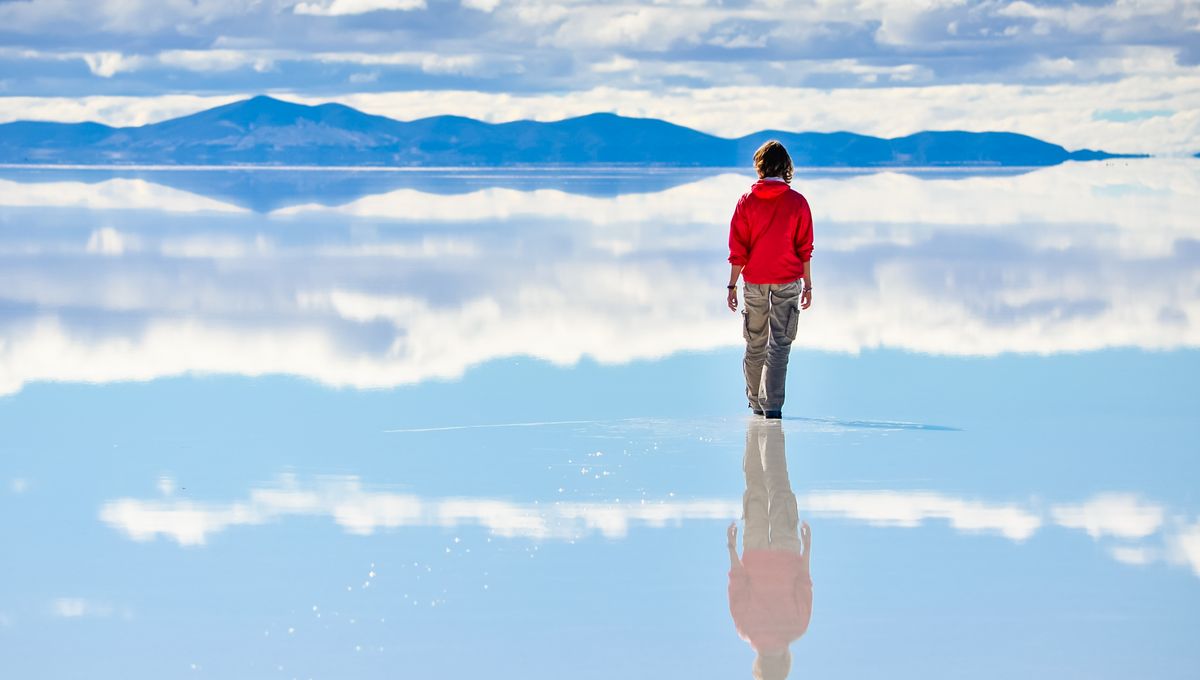
If you’re planning a trip to Bolivia’s Salar de Uyuni, be sure to take your camera. Not only does the relentless uniformity of the landscape provide endless opportunities for trick photography by distorting the sense of perspective, but the thin layer of water that accumulates on the surface also converts this colossal salt flat into a giant reflector.
The rest of this article is behind a paywall. Please sign in or subscribe to access the full content.
For this reason, the Salar is often labeled the world’s largest natural mirror. Sitting some 3,600 meters (11,800 feet) above sea level in the Potosí region in Bolivia, the enormous salt desert covers some 10,000 square kilometers (3,860 square miles), making it the most extensive feature of this kind anywhere on the planet.
However, during the wet season, the interior of the salt flat becomes inaccessible, which means the only evidence we have for its mirror-like nature comes from photos taken by tourists near the periphery of the desert. It’s therefore unclear if the entirety of the Salar de Uyuni acts like a mirror.
To find out, researchers looked at almost 400,000 radar measurements taken by Sentinel-3 satellites, which are equipped with altimeters that emit radar pulses and measure the strength of the signal that is reflected back.
For a surface to act as a mirror, variations in its smoothness must be within a fraction of the electromagnetic wavelength of visible light, which is between 380 and 750 nanometers. As the satellites passed over the Salar, measurements taken by their altimeters recorded these fluctuations in surface smoothness in fine detail.
Ultimately, the study authors found that salt flat’s interior is not a uniform mirror, as its surface smoothness and reflectiveness vary across time and space. For instance, they found that “the surface starts becoming radar smooth at the beginning of the wet season in December,” with a peak in February.
During a trip to the desert’s interior in February 2024, the researchers noted that the sun is reflected as a “disc-like spot” on the wet surface, confirming the mirror-like properties of the salt flat at this time of year.
However, they go on to explain, “From late April to November, the surface becomes radar smooth only on very rare occasions.”
Between 2016 and 2024, mirror-like conditions were observed only once during the dry season, with unusually intense rainfall in August 2018 leaving a layer of surface water 1.4 centimeters (0.6 inches) deep, resulting in a high level of reflectivity.
Ultimately, then, the study authors conclude, “The Salar de Uyuni is not a vast uniform mirror for the radar altimeter. Therefore, it is also likely that it is not a large mirror for optical wavelengths”.
The study is published in the journal Communications Earth and Environment.
Source Link: Bolivia’s Enormous Salt Flat May Not Be World’s Largest Natural Mirror